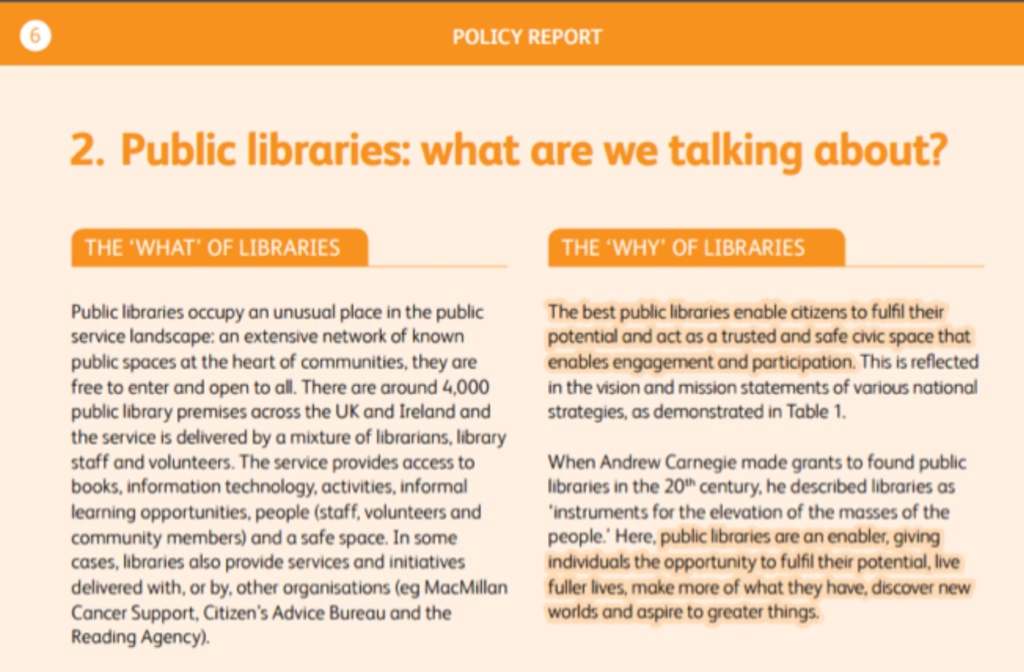
Why public libraries?
Public libraries have a unique role in offering neutral spaces at the heart of local communities where everyone is welcome and where a love of reading can be fostered. Key to literacy is not just the mechanics of learning to read, which schools are best placed to facilitate, but the wider curriculum tenet of ‘reading for pleasure’.
Of importance is the offer to all who come into the library space. The library does not have the stigma of other public ‘institutions’ and welcomes all ages.
An ongoing campaign to ensure all children are reaching desired levels of reading proficiency by the age of 11 is the Read On Get On campaign, initiated by Save the Children. The foreword to the latest research report from this alliance of groups interested in reading states:
Being able to read well is vital for a child’s prospects at school and in life. Yet every year, almost 148,000 children leave primary school in England unable to read well. This includes one-third of all children growing up in poverty. For many, the impact on their life chances is likely to be dramatic. This national failing helps explain the persistent educational divide in England that, each year, prevents thousands of our poorest children from fulfilling their potential.1
This is an uncomfortable fact, and it is of concern that children are still not receiving equal opportunity to read and read widely, when there are facilities available for this to happen in libraries as well as schools.
